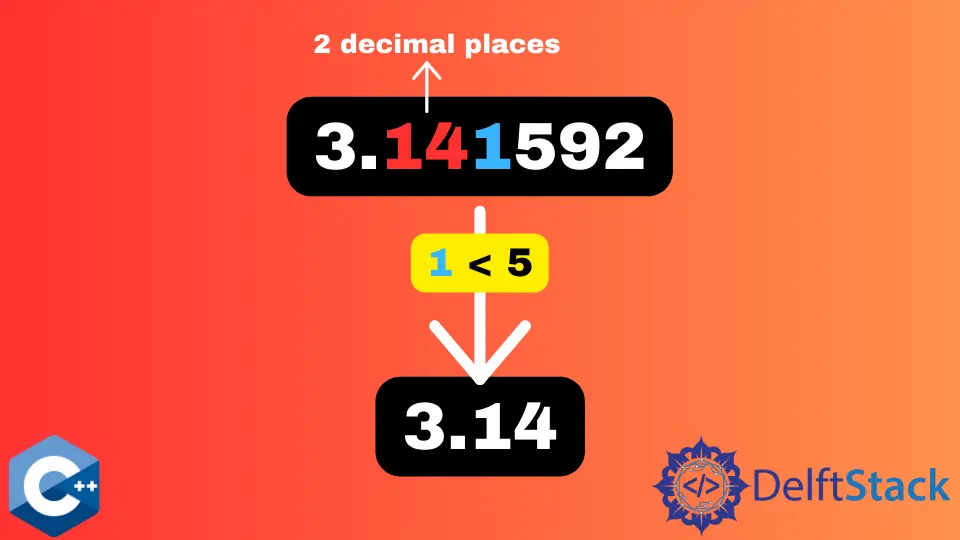在 C++ 中把浮点数取整到两位小数
-
在 C++ 中使用
printf函数格式说明符将浮点数四舍五入为 2 个小数 -
在 C++ 中使用
fprintf函数格式说明符将浮点数舍入到 2 位小数 -
在 C++ 中使用
std::setprecision和std::fixed将浮点数舍入为 2 个小数

本文将介绍几种在 C++ 中如何将浮点数四舍五入到两位小数的方法。
在 C++ 中使用 printf 函数格式说明符将浮点数四舍五入为 2 个小数
浮点数具有特殊的二进制表示形式,这意味着机器无法精确表示实数。因此,在对浮点数进行运算并对其进行计算时,通常要借助于舍入函数。但是,在这种情况下,我们只需要输出数字的小数部分。
第一种解决方案是利用 printf 函数将格式化的文本输出到 stdout 流。注意,浮点数数字的常规格式说明符-%f 应修改为%.2f。后一种表示法确保从该数字仅打印 2 个小数,并且同时根据通用数学规则进行舍入。请注意,其他数据类型的格式说明符也可以使用类似的符号。
#include <iostream>
#include <vector>
using std::cout;
using std::endl;
using std::vector;
int main() {
vector<double> floats{-3.512312, -21.1123, -1.99, 0.129, 2.5, 3.111};
for (auto &item : floats) {
printf("%.2f; ", item);
}
return EXIT_SUCCESS;
}
输出:
-3.51; -21.11; -1.99; 0.13; 2.50; 3.11;
在 C++ 中使用 fprintf 函数格式说明符将浮点数舍入到 2 位小数
fprintf 是另一个可以用来做输出格式化的函数,就像 printf 调用一样,此外,它可以写入任何可以作为第一个参数传递的 FILE*流对象。在下面的示例中,我们演示了打印到 stderr 流,这是 stdout 的无缓冲版本,用于错误报告和日志记录。
#include <iostream>
#include <vector>
using std::cout;
using std::endl;
using std::vector;
int main() {
vector<double> floats{-3.512312, -21.1123, -1.99, 0.129, 2.5, 3.111};
for (auto &item : floats) {
fprintf(stderr, "%.2f; ", item);
}
return EXIT_SUCCESS;
}
输出:
-3.51; -21.11; -1.99; 0.13; 2.50; 3.11;
在 C++ 中使用 std::setprecision 和 std::fixed 将浮点数舍入为 2 个小数
或者,可以将 I/O 机械手库中的 std::setprecision 函数与 std::fixed 一起使用。后者用于修改浮点输入/输出操作的默认格式。如果我们将其与 std::setprecision 一起使用,则结果是实数的固定精度,并且可以通过传递给 std::setprecision 本身的整数参数来指定精度。
#include <iomanip>
#include <iostream>
#include <vector>
using std::cout;
using std::endl;
using std::fixed;
using std::setprecision;
using std::vector;
int main() {
vector<double> floats{-3.512312, -21.1123, -1.99, 0.129, 2.5, 3.111};
for (auto &item : floats) {
cout << setprecision(2) << fixed << item << "; ";
}
return EXIT_SUCCESS;
}
输出:
-3.51; -21.11; -1.99; 0.13; 2.50; 3.11;
Enjoying our tutorials? Subscribe to DelftStack on YouTube to support us in creating more high-quality video guides. Subscribe
作者: Jinku Hu
